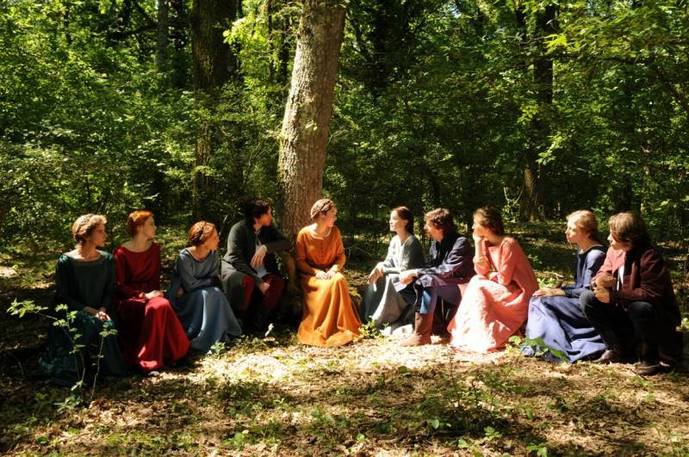


“We started our movie with something that usually is ignored when portraying The Decameron. We started with the Black Plague. The plague is what brings together a group of desperate youngsters. Under an iconographic pov, in the Middle Ages the plague is a skeletal figure carrying a large scythe.
Death is scary, even today when we think of death we imagine a dark man carrying a knife. And in a moment of desperation and death the only hope is imagination. Why imagination? Because imagination revives man's energy and will to survive and react.” With these words director Paolo Taviani introduced to us his film, directed with brother Vittorio, Wondrous Boccaccio, presented at the Tribeca Film Festival. “This movie was for us a large pot, that we use to stir together the young narrators, their tales and their desire to survive.”
Starring some of Italy's finest - Paola Cortellesi, Jasmine Trinca, Josafat Vagni, Kim Rossi Stuart, Riccardo Scamarcio, Michele Riondino, Lello Arena, Vittoria Puccini, Kasia Smutniak, Carolina Crescentini and Flavio Parenti – Wondrous Boccaccio narrates 5 of the 100 tales written in the 14th century by Giovanni Boccaccio in The Decameron. The collection of novellas is a document of life at the time and the Taviani brothers remained pretty much faithful to it with some, more modern, differences. In the book Catalina is returned to her husband, even though he had abandoned her after she got sick. In the Tavianis' film she is given the right to chose. And she does so wisely.
The frame story is the same: a group of seven young women and three young men run away from the plague-ridden city of Florence and find refuge in a deserted villa in the countryside. The Tavianis are the first directors who, translating The Decameron onto film, dedicate so much attention to this part.
In the villa, in order not to despair and not to give in to lust, the youngsters have to tell each other stories. The tales are of love, lust, death, resurrection, disease, wit, practical jokes and life lessons. “Each tale though portrays love in all its aspects. Love itself becomes the antidote against all the suffering of a time where the plague had brought a general sense of uncertainty.” That reminded the directors of the general sense of malaise we are living through now and the plague became a metaphor of human condition, especially that of today.
“The Black Death is here today, but in a different shape and form,” the brothers have declared in the past, “We all suffer because of today's social ills. Isis, is today's Black Death, as are the political, social and economic crises that afflict the world. Our youth has lost all hope but in our film the young survivors don't give up, they decide they want to survive. They have to leave Florence, their homes and who's dear to them behind, in order to reach the villa.”
Shot on location in Tuscany and Lazio, Wondrous Boccaccio sports a setting of unparalleled beauty, even with corpses abandoned on the road one cannot avoid noticing the majesty of the palazzos. Each original tale becomes its own film within a film, but what remains constant throughout the film are the enchanting characters, the aforementioned gorgeous setting and impeccable costumes. The Taviani Brothers brought Boccaccio on the big screen with their own unique vision.
TriBeKa film festival . BUY TICKETS >>> [2]
Source URL: http://test.casaitaliananyu.org/magazine/events/reports/article/wondrous-boccaccio-plague-metaphor-today
Links
[1] http://test.casaitaliananyu.org/files/maravigliosoboccacciocover1429844535jpg
[2] https://tribecafilm.com/filmguide/wondrous-boccaccio-2015